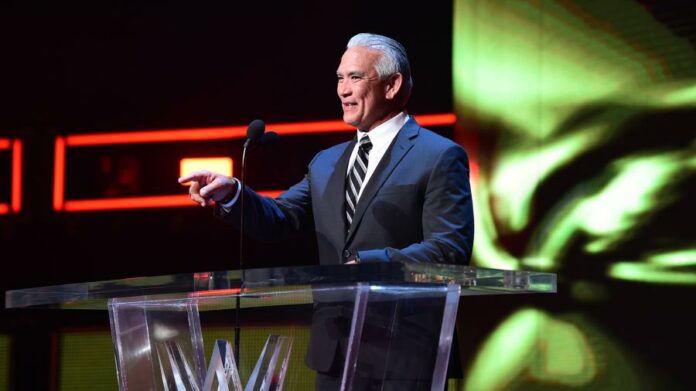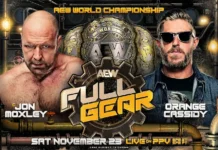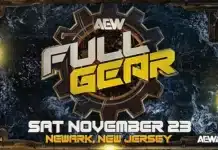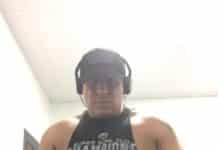
With the WWE Network now on Peacock and the end of the streaming platform as a stand alone service, I decided to browse the library on the NBC-owned app, and while more content was added since the official launch a few weeks ago, the navigation of titles is absolutely horrendous. Perhaps things will be more organized when there can be more content grouped together, but right now, there’s literally just random categories with certain titles that have no rhyme or reason to how they landed there. For example, certain pay-per-views from the late-90s are on the service, but aren’t under the usually PPV category, but instead put under a label of Attitude Era content so you don’t have a direct path to find content, which leaves viewers searching several categories to even see if a certain show has been added.
When an organized DVD collection would give you faster access to content than a streaming service, you know improvements should be made to the platform. And, yes, some content was censored, but that’s another discussion for another time, but at least the tedious process of converting VHS copies of original broadcast to DVD over the years finally paid off.
That said, as I looked through what was available on the app, I randomly found The Chi-Town Rumble a few days after the launch of the WWE version of Peacock. The Ric Flair/Ricky Steamboat trilogy from this year is one of my favorite series of matches so that was the primary reason for the selection, and as I would find out from watching this again, it was one of the gems in what was often a mixed bag of a broadcast. The background for when this event took place provides some insight into some of the positives and negatives that were seen on the card. Just a few months prior to this, Ted Turner, the media baron that used the NWA as a staple of TBS, bought Jim Crockett Promotions to rescue it from bankruptcy. As such, while Turner kept the organization afloat, somehow, even with a broadcast company as ownership, the overall production of the pay-per-view still resembles something that would’ve been seen under the Crockett banner, but without the gritty charm that early JCP events had throughout the mid-80s. Instead, the terrible lighting and subpar camera work just diminish the visual presentation. The area around the ring is very dark and tag partners on the apron almost get lost in the shadows, and there are many shadows on the canvas from uneven lighting for the show.
With just seven matches on the card, the general theory might be that it gives each bout more time to develop and explain the narrative of the contest, which makes sense, but in a few scenarios throughout this event, the bouts just go too long and lose their momentum. The opening bout of Micheal Hayes vs. The Russian Assassin was a prime example of it. A comical side note is that the announcers refer to him as Russian Assassin #2, but the ring announcer said he was Assassin #1 and it was clear the office just wanted a generic opponent for Hayes. While the founder of The Freebirds wasn’t known as an in-ring technician, the match itself was fine, with Hayes getting the win over either the first or second Russian, but went about five minutes too long and lost some steam toward the conclusion.
Next up, Sting beat Butch Reed in a decent bout, and the biggest takeaway from this match was that you could see the legitimate potential Sting had to become a major star, which he did when he defeated Ric Flair for the Heavyweight championship the following year.
The Midnight Express of Bobby Eaton and Stan Lane were challenged by the Original Midnight Express, except they weren’t. In an angle that could’ve and should’ve been a much bigger angle, Paul E. Dangerously brought Randy Rose and Dennis Condrey back into wrestling to get revenge on the team that took over the name. It started with the memorable segment where Jim Cornette was smashed with the infamous phone and bled on television. Unfortunately, before this match, which was designed to be one of the featured contests in the feud, Condrey decided to leave without notice again. Jack Victory was added to the team, and while the match was solid, something that should’ve had a lot of build up with the extensive history of the teams, was basically just a throw together tag match with a random loser leaves town stipulation because Jim Herd wanted to cut Randy Rose from the roster. For their part, Cornette and Paul E did fine in the match and actually added a unique dynamite to it.
Mike Rotunda vs. Rich Steiner for the TV title and Barry Windham for the US title are discussed at the same time because it was essentially a carbon copy scenario for both matches. The actual in-ring work was fine, nothing too spectacular, but nothing terrible either. However, the finish to both matches had both wrestlers’ shoulders down and the winner happened to get their shoulder up before the three count to be declared the winner. Rotunda and Luger each claimed a championship in the exact same fashion. Booking the same finish twice on the same card would’ve beeen questionable, but to use it for two matches in a row to switch the championships just seems like lazy booking.
The Road Warriors beat Kevin Sullivan and Steve Williams to retain the tag titles in a fun brawl. Although, it’s a combination of comical and ridiculous that Sullivan was the only participant in the match to sell his opponents’ moves. It was a short contest, but it helped add a spark to the card after the pair of repetitive finishes hindered the momentum of the event.
Referee Teddy Long raises the hand of the new NWA World Heavyweight Champion:Ricky Steamboat.Chi-Town Rumble '89 pic.twitter.com/b2m9J0iNAY
— Rasslin' History 101 (@WrestlingIsKing) October 27, 2017
As mentioned, the main event of Ric Flair vs. Ricky Steamboat was the reason that I picked this particular show to watch on Peacock, and while what match was the best in the trilogy from this year can be debated, you know that Flair/Steamboat is just top quality professional wrestling. Steamboat won the belt after a stellar contest, and in many ways, this main event boosted what was otherwise an average or mediocre card. It’s almost surprising when you watch this show again, particular because the NWA had such a great year in 1989, but outside of the main event, this show was very average card.
What do you think? Comment below with your thoughts, opinions, feedback and anything else that was raised.
Until next week
-Jim LaMotta
E mail [email protected] | You can follow me on Twitter @jimlamotta





